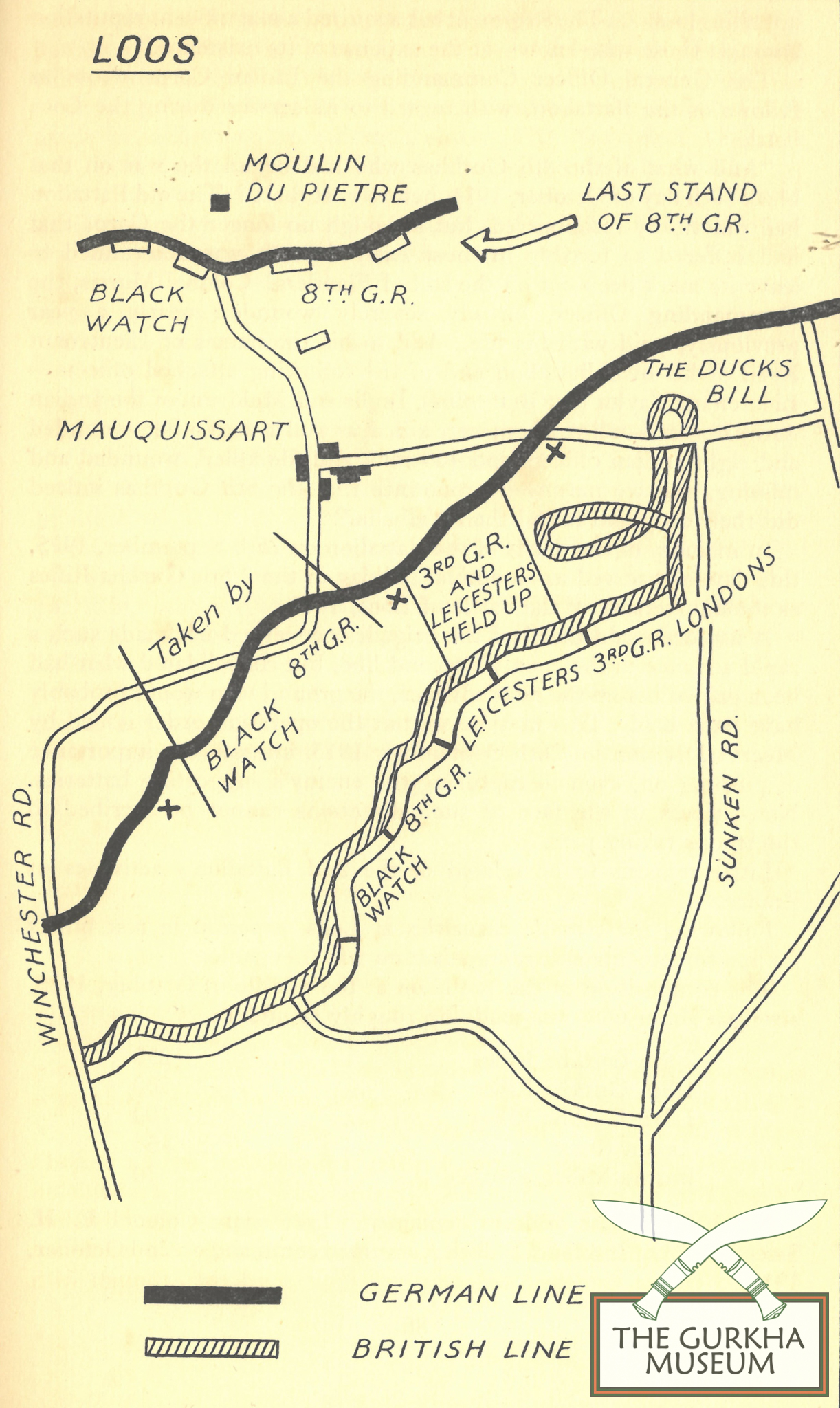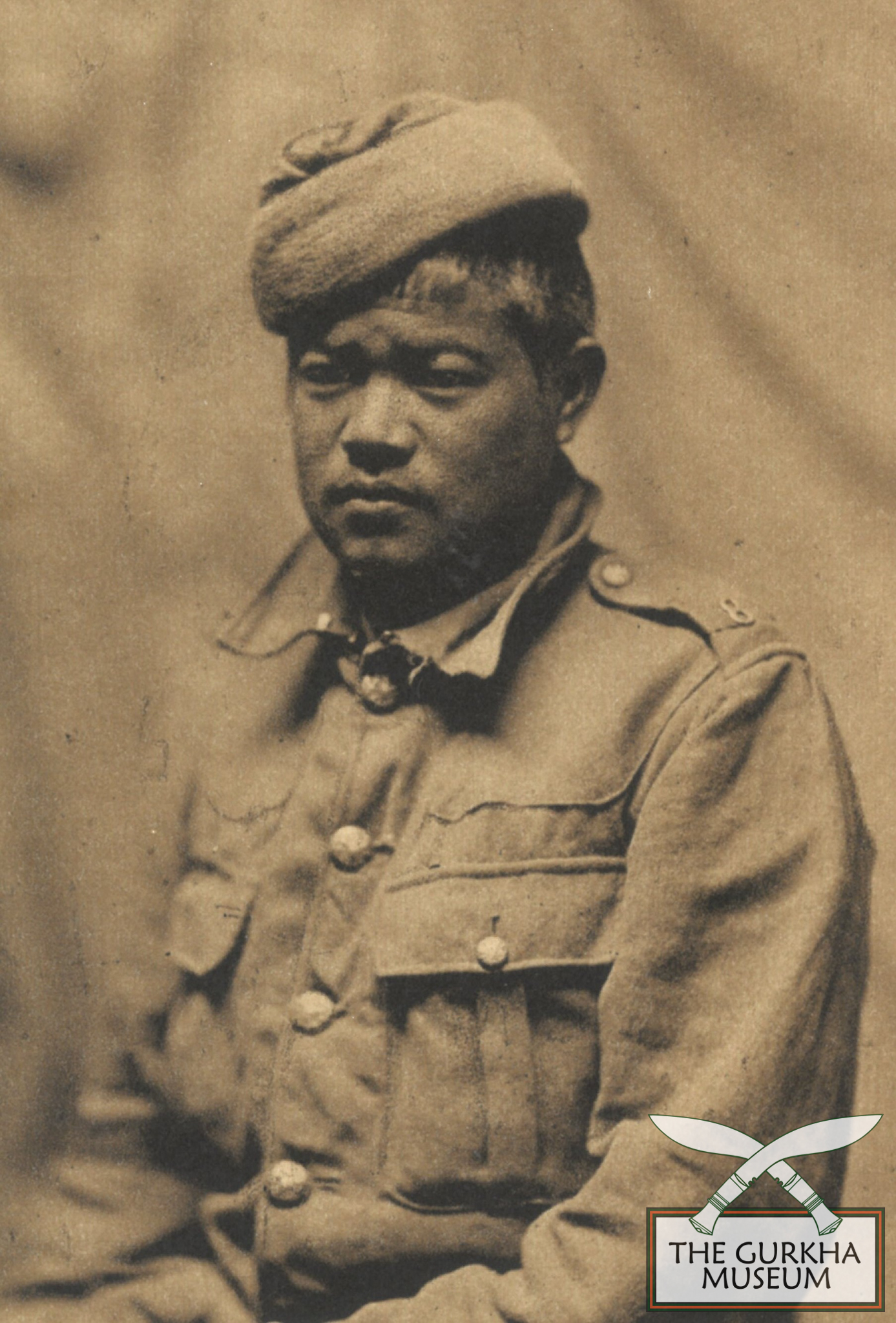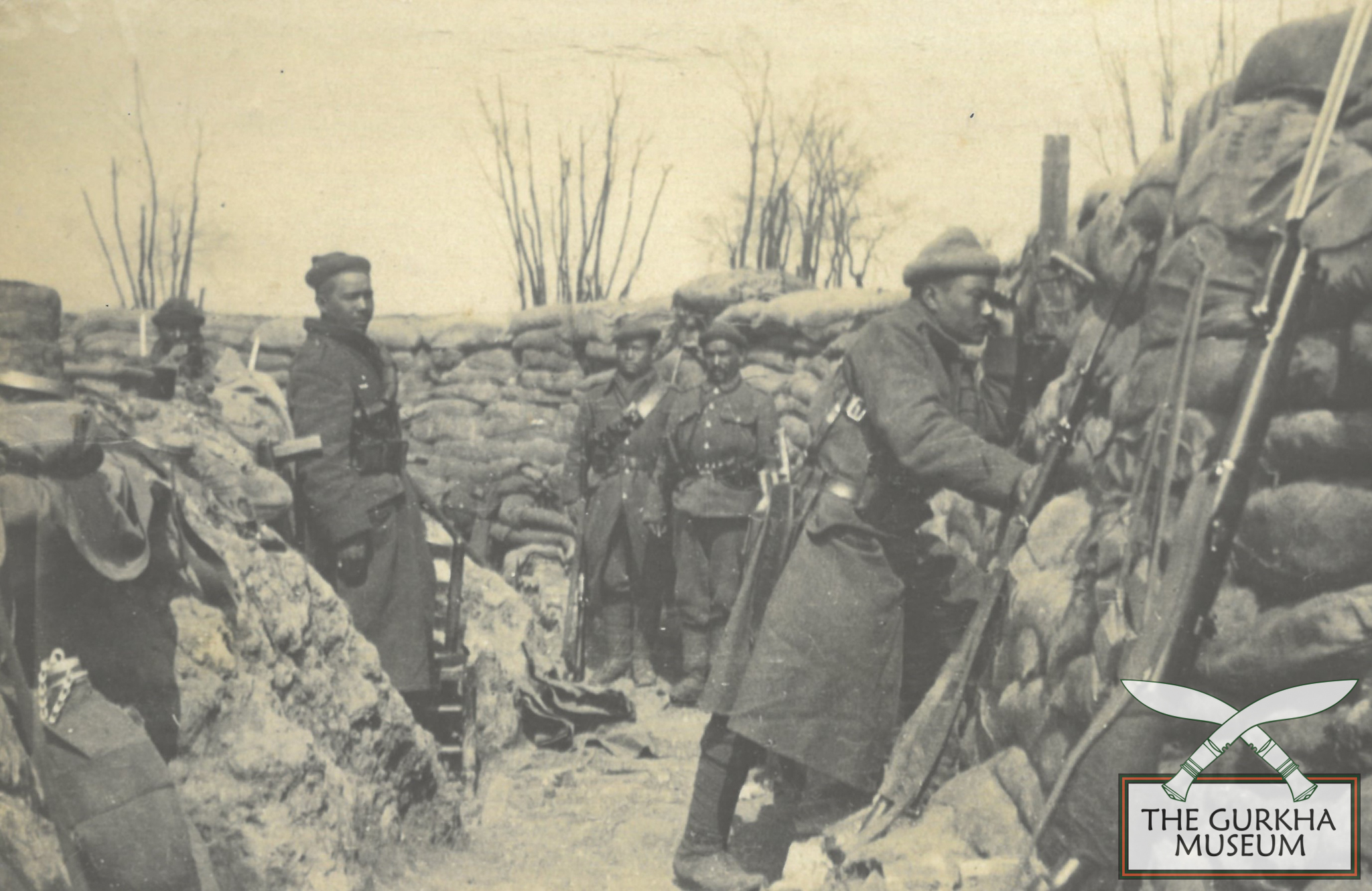Among the six Gurkha battalions in France were the 2nd Battalion, 8th Gurkha Rifles (2/8GR). At the outbreak of the war, 2/8GR had been at Lansdowne, Northern India. It had arrived in France on 14 October, and by the end of the month were in the line near Festubert. Over the following year, 2/8GR would fight in a number of battles and suffer many casualties. By the middle of 1915, it was a battle hardened, veteran unit.
But even after enduring the battles at Festubert, Neuve Chappelle and Aubers, 2/8GRs greatest trial still lay ahead.
The Battle of Loos
In September 1915, the French Army was planning a large-scale offensive against the German lines. In order to divert German reinforcements, Field Marshal Sir John French, Commander of the BEF, agreed that the British would support the offensive with an attack on German defences around the village of Loos. The attack was planned for 25 September, and was to be the largest British offensive of the war up to that point. In order to cause chaos among the Germans, British planners decided to employ poison gas on the first day of the battle.
Among the formations selected for the attack was the Meerut Division, which contained 2/8GR and the 2nd Battalion, 3rd Gurkha Rifles (2/3GR). Its objective was the high ground around Haut Pommereau, from which the British could threaten German positions at La Bassée. The preliminary bombardment began on 21 September, with thousands of British artillery shells falling along the German frontline.
On 23 September the weather turned against the attackers, with heavy rain flooding British trenches and waterlogging the ground. The wind, the direction and intensity of which would determine the success of the planned gas attack, was inconsistent. But despite these setbacks, British commanders kept firm to the planned attack date of 25 September.
On the evening of 24 September, the roughly 500 Gurkhas of 2/8GR struggled along flooded trenches to their starting positions. They would attack alongside 2/3GR and the 2nd Battalion, Leicestershire Regiment (2nd Leicesters). At 5.48am on the 25th, a large mine was blown to the left of 2/8GRs position, followed by an intense artillery bombardment. The bombardment lifted at 6am. Moments later, whistles blew along the trench, and the Gurkhas clambered over the top.
The 8th Gurkhas Attack
2/8GRs first wave, consisting of ‘C’ and ‘B’ companies, climbed out of their trenches into a dense pall of fog and smoke. Despite initial confusion, the Gurkhas found their way their way across the shell torn ground and attacked the German frontline. The attack was initially successful, with the Gurkhas capturing the first three lines of enemy trenches. Captain Buckland, with 150 men, established a defensive position beyond the German third line, awaiting the inevitable counterattack.

A map of 2/8GRs attack, from the 8th Gurkha Rifles Regimental History.
Despite this early success, the battle began to disintegrate as the remaining waves of 2/8GR went over. On the battalions right, the 2nd Leicesters had failed to gain their objective, meaning that the Germans could fire on the Gurkhas’ flanks. Subsequently, the fourth wave was raked by heavy machine gun fire as it tried to cross the battlefield, causing severe casualties and mortally wounding the battalion’s commander, Lieutenant Colonel Morris.
The casualties among the British officers were heavy, and by mid-morning Captain Buckland was the only one not killed or wounded. By this time, his men were engaged in brutal close quarters fighting with the Germans. With Brigade Headquarters unaware of how the battle was progressing, Captain Buckland was ordered back to make a report. Leadership was now left to the Gurkha officers.

Gurkhas during a practice attack in France, c.1914 – 1915.
With their right flank threatened, the situation quickly became critical. The Germans managed to reestablish themselves in their former frontline and attacked 2/8GR from the rear. The battle now devolved into isolated pockets of Gurkhas fighting against unwinnable odds. One party, led by Subedar Sarabjit Gurung, made a brave attempt to dislodge the Germans, but were all killed.
Later in the day, a battalion of the Garhwal Rifles attempted to reinforce the battered Gurkhas. As they tried to advance, they found the already flooded communications trenches crammed with wounded and gassed soldiers. With reinforcements unable to move up, any hope of success for 2/8GRs attack was lost.
Subedar Ransur Rana, who took over Captain Buckland’s position, held out for as long as he could, but was ultimately overwhelmed by determined German counterattacks. By the afternoon, 2/8GR began to fight its way back out of the German trenches. Their withdrawal was covered by Jemadar Remine Thapa, who refused to retreat until all of his men had gotten away.
By 3.30pm, the bloodied survivors of 2/8GR were back in the reserve line. From an attacking strength of 500, the battalion could now muster only two officers and 30 men.
Aftermath
2/8GRs attack on 25 September was one episode in the wider military disappointment of the Battle of Loos. Raging on until 8 October, the battle was a German defensive victory that resulted in almost 60,000 British and Indian casualties. Within that, 2/8GRs casualties, in less than a day’s fighting, were 164 officers and men killed, 139 wounded and 166 missing, for a total of 469 casualties.

A Gurkha of 2/8GR whilst a prisoner of war in Germany, c. 1916
Although a defeat for the British, Loos has lasting historical implications for the Gurkhas. It was on 26 September that Rifleman Kulbir Thapa of 2/3GR became the first Gurkha soldier to receive the Victoria Cross, the British military’s highest award for gallantry. The morning after 2/8GRs attack, Kulbir braved enemy fire to drag three wounded men to safety, despite being wounded himself.

Kulbir Thapa, the first Gurkha soldier to receive the Victoria Cross.
Following the battle, 2/8GR was taken out of the line for rest and reinforcement. In late-1915, it was decided that the Indian Corps would be withdrawn from the Western Front and redeployed to the Middle East. On 10 November, 2/8GR was sent to Egypt. After several months defending the Suez Canal, the battalion returned to India in March 1916, after 18 months overseas.
Regardless of the outcome of 2/8GRs attack on 25 September, no one was ever in doubt of its courage and tenacity throughout the fighting. General Sir James Wilcocks, commander the Indian Corps, later wrote at length about the battalions achievements throughout the day, concluding that ‘we may well pronounce that the 8th Gurkhas indeed did their duty and found their Valhalla’.






